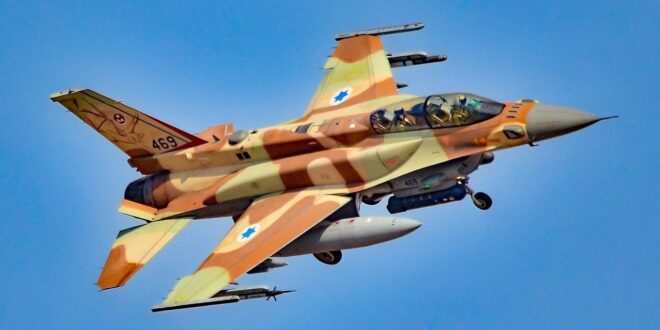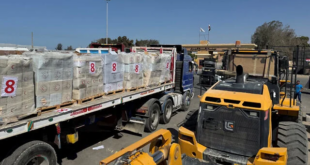Key Points – Israel’s F-16I “Sufa” (Storm) multi-role fighters likely played a crucial role in “Operation Rising Lion,” the massive air assault on Iran’s nuclear infrastructure that began on June 12th.
-Flying alongside F-35I and F-15I jets, the F-16Is surely launched follow-on strikes against hardened targets like the Natanz enrichment facility, using precision-guided munitions such as the GBU-39 Small Diameter Bomb.
-With over 350 in service, the F-16I is a combat-proven workhorse of the Israeli Air Force, featuring an advanced radar, extended range via conformal fuel tanks, and robust electronic warfare capabilities, all of which were critical to the operation’s success.
F-16Is Prove Their Worth In Israeli Strikes in Iran
The Israeli operation against Iran, called Operation Rising Lion, shocked Tehran in massive strikes from 200 Israeli warplanes beginning on June 12.
Prime Minster Benjamin Netanyahu said aerial missions will continue “as long as necessary.”
The strikes killed key Iranian military commanders and scientists, destroyed air defense sites, and pounded nuclear infrastructure. The main effort was to keep Iran from producing at least nine nuclear devices and from enriching uranium for even more atomic weapons.
The Storm Is Rising
One of the key airplanes used in the attack was the F-16I Sufa or “Storm.”
Israel modified this fighter from the F-16D block 50 and 52 jet. Over the years, the Israelis worked to make the avionics package and weapons systems better. The Israeli air force has more than 350 F-16Is. They are equipped with precision-guided munitions.
The F-16I most likely flew with F-35Is and F-15Is as part of a huge array of strikes on Iran. This group of fighters was instrumental in damaging or destroying nuclear research facilities, power plants, uranium mines, uranium conversion, uranium enrichment sites, and other nuclear facilities, according to the BBC.
Iran has always said its nuclear program is for civilian purposes, but Israel and the United States has doubted that assertion. Iranian engineers and scientists were likely putting the final touches on the nuclear bombs before the attack.
F-16I Lights Up Social Media
On June 13, OSINT Technical, an open source intelligence account on the social media site X showed a photo of F-16Is readying to take off to Iran. “Newly released image of Israeli Air Force F-16s preparing to take off for last night’s initial attack on Iran. Each F-16I Sufa can be seen armed with a max fuel tank loadout, [likely] 8x GBU-39 SDB glide bombs, and 2x AIM-120B AMRAAMs. 48 glide bombs in this image,” OSINT Technical wrote.
This was the biggest aerial attack against Iran since its war with Iraq in the 1980s and the F-16I was likely flying in beast mode.
It was able to be re-fueled in air by KC-707 tankers. Israel has seven of these airplanes. The F-16Is likely flew over Iraqi and Syrian air space on the way to Iran.
F-16I Is One Dependable and Combat-Proven Fighter
F-16Is have been busy. They took part in Operation Days of Repentance strikes last autumn to take out Iranian air defenses, radar, and command and control sites. This was a successful mission and prepared the battlefield for the F-16Is to target the Iranian nuclear infrastructure June 12.
“The Israeli Defense Forces released a statement confirming the operation, emphasizing that all aircraft returned safely. The statement highlighted the use of F-16I Sufa jets, a cornerstone of Israel’s air force, equipped with advanced weaponry to ensure precision and minimize collateral damage,” according to BulgarianMilitary.com.
More Details on the F-16I
The Sufa also executes air superiority and air policing missions to protect the homeland. Avionics have been improved over the years. The Pratt & Whitney F100 or General Electric F110 engine puts out 27,000 pounds of thrust.
The F-16I is a fast warbird with top speed of MACH 2 or around 1,500 miles per hour. External fuel tanks extend range are were instrumental in helping the Sufas reach Iran.
There is a helmet display that allows aviators to point and shoot by aiming their heads and eyes at targets. This gives aviators a great line of sight to paydirt.
Israel first received Sufas in 2004. The fighter has two seats. It is better than the F-16s flown by other countries with 50 percent more weapons payload and 50 percent more range.
Electronic warfare and jamming capabilities have been upgraded on the F-16I over the years and this capability served it well during Operation Rising Lion. The Northrop Grumman AN/APG-68(V9) radar, provides a 30 percent better range than previous models. It can track multiple targets.
Destroying Iran’s Nuclear Program
The F-16I likely used the GBU-39 Small Diameter Bomb during the operation. These have been highly effective in previous missions against Hamas and Hezbollah. The bombs can penetrate into hardened targets.
The F-16I warplanes played an important part in Operation Rising Lion. Their robust strike capability and radar evasion with electronic warfare make them more survivable. This airplane is an Israeli hot rod that streaks through the air looking for the bad guys to hit with maximum destruction and precision.
The F-16I will continue to fly missions throughout the weekend to further punish Iran and keep Tehran from producing a nuclear weapon.
 Eurasia Press & News
Eurasia Press & News




